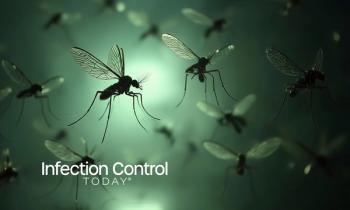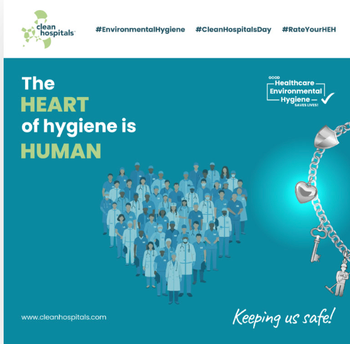Here in the United States, we’ve all noticed how hot it was this past summer. Along with the heat came disproportionate amounts of rainfall in some areas of the country. In the eastern US, many extreme rainfall events resulted in residual pools of stagnant water throughout the region—conditions ripe for the growth and spread of mosquitoes.
Top Takeaways From This Article
- Climate change impact: Climate change, including rising temperatures and altered rainfall patterns, creates favorable conditions for the increased transmission of mosquito-borne diseases like West Nile Virus in the US.
- West Nile virus (WNV): WNV is identified as one of the most common mosquito-borne pathogens in the US. The transmission, symptoms, and the fact that many infections are asymptomatic make early detection and prevention crucial.
- Vulnerable populations: Older individuals and individuals with compromised immune systems are at a higher risk of severe WNV infections. Understanding these vulnerable populations is vital for targeted prevention efforts.
- Public health measures: The importance of proactive public health measures, such as mosquito control, removing standing water, and repellents, is to reduce mosquito breeding and protect against mosquito bites.
- Climate change awareness: The need for public awareness and proactive measures is to address the changing climate's impact on the spread of mosquito-borne diseases, emphasizing that being observant of local conditions is crucial in disease prevention.
Mosquitoes can be bothersome; however, these insects can also serve as vectors for disease-causing pathogens. The best-known mosquito-borne pathogen worldwide is malaria, caused by species of the protozoan Plasmodium (P falciparum being the best known). Malaria is principally a tropical disease, only rarely observed in the US. Other pathogens can be spread via mosquito bites. During 2015 and 2016, mosquitoes spread another tropical pathogen, the Zika virus, into Florida and Texas.1 Infection of pregnant mothers by the Zika virus often results in fetal infections, leading to neurological defects in neonates. However, the most common mosquito-linked blood-borne disease in the US is caused by the West Nile virus (WNV). Older people, individuals with compromised immune systems, and those living in endemic regions are particularly vulnerable to this pathogen.
WNV was first isolated from a Ugandan woman with fever in 1937.2 The woman recovered from the infection and 3 months later demonstrated strong neutralizing antibodies in her blood serum. The first cases of WNV in the US were observed in 1999 in New York City.3 Later studies of WNV have indicated that up to 80% of human infections are subclinical or asymptomatic.4 Frequent symptoms for the remaining 20% include headache, weakness, and sometimes gastrointestinal problems. Fewer than 1% of those infected can experience a neuroinvasive disease expressed as meningitis, encephalitis, or acute flaccid paralysis. Misdiagnosis of WNV meningitis can occur since the neuroinvasive symptoms can be indistinguishable from meningitis due to other etiologies.4,5
The virus that causes WNV infections is an enveloped positive-stranded RNA virus in the Japanese encephalitis serocomplex (Flavivirus genus).6,7 Of the 8 phylogenetic lineages of this virus studied, 8 are associated with human disease.8 WNV has become endemic in many places around the globe. The reproductive cycle of the virus requires avian reservoirs and the presence of a specific type of mosquito. The virus is transferred from birds to mosquitoes in the Culex genus, which can then pass the pathogen to mammals.8,9 Thus, this pathogen's spread requires weather events (heavy rainfall that leads to standing, stagnant water that supports mosquito reproduction) and host birds present in the eastern US this past summer.
The most common route of infection by WNV is recent exposure to mosquitoes, but the disease has occasionally been transferred via blood transfusion or organ transplantation.10,11 Studies of the prevalence of WNV infections in the US have indicated that outbreaks exhibit seasonal patterns tied to mosquito abundance and activity, with most human cases occurring between June and October (see Figure). Exposure to dead birds can also serve as a vector for the WNV. The CDC recommends that if you find a higher-than-usual number of dead birds in your area, don’t touch them and contact your local Public Health Department.12
From a clinical perspective, the World Health Organization encourages all laboratory workers to follow universal precautions when working with specimens from WNV-infected patients.13 A common route of infection by WNV for laboratory and healthcare workers is accidental “sticks” via sharps.14 As for infection preventionists in health care facilities, there is little to be done to prevent the spread of WNV in their facility other than to follow normal clinical precautions. However, due to the link to mosquitoes, infection prevention measures targeting possible breeding sites outside of health care facilities should be part of planning whenever warm, wet conditions prevail. Such mosquito prevention and control measures may include larviciding and adulticiding (insecticides that control either the larval or adult stages of mosquitoes, respectively) to reduce mosquito populations and interrupt transmission.15
Personal protection measures may also be recommended to help people avoid mosquitoes while outdoors. These measures may include mosquito-repellant chemicals, such as N,N-diethyl-meta-toluamide (DEET), found in many commercially available insect repellents.16 Other chemical repellents, such as picaridin, IR 3535, or lemon-eucalyptus oil, have been found to be effective.16 Those who work outdoors may also wear clothing that covers as much skin as possible to avoid mosquito bites.
Avoiding mosquitoes may become more critical as climate change impacts temperatures and rainfall differentially around the globe. According to the Intergovernmental Panel on Climate Change, expected climatic and weather changes in North America in coming decades will include generalized warming and changes to rainfall patterns that will consist of increased heavy rainfall events, similar to weather patterns observed in the eastern US during the summer of 2023.17 All of these climate-related changes pose risks to public health by supporting mosquito reproduction, resulting in the spread of mosquito-borne pathogens like WNV.18
Distribution of WNV across the US over the past few decades has been uneven, spatially and temporally. The CDC provides good summary data on US infections from 1999 to 2022. The map shows that the highest number of infections over the period occurred in the upper Midwest US.19 (Figure 1) A detailed study of mosquito-borne diseases across the US for one recent year (2021) supported the idea that WNV was the most prevalent mosquito-borne disease in the US and that the pattern of infections across US States was similar to the 1999 to 2022 pattern.19, 20 Other studies have indicated that WNV infections are most often observed during the warmer months, with a peak for the 1999 to 2022 period in August. Note that infections have persisted into the fall months, so measures targeting mosquitoes may be required in temperate areas up to at least the first frost.
Overall, even though WNV is the most commonly transmitted mosquito-borne pathogen in the US, the number of cases seen each year is relatively low. The elderly and immunocompromised individuals are most at risk. Common sense measures to remove any standing water around your home or business will help reduce mosquito breeding areas. If you find higher than usual numbers of dead birds in your area, this might indicate the local spread of WNV. You should contact your Public Health Department. Observing possible conditions that may lead to the spread of WNV will become more critical as climate change continues to bring changing weather patterns to new areas.
References
- 2023-a. Zika cases in the United States. Centers for Disease Control and Prevention. https://www.cdc.gov/zika/reporting/index.html#:~:text=In%202015%20and%202016%2C%20large,transmission%20in%20Florida%20and%20Texas. Updated January 13, 2023. Accessed August 25, 2023.
- Smithburn KC, Hughes TP, Burke AW, Paul JH. 1940. A neurotropic virus isolated from the blood of a native of Uganda. Am J of Trop Med and Hyg, s1-20:471–492
- Sejvar JJ. 2003. West Nile virus: A historical overview. Ochsner J. 5:6-10. PMID: 21765761; PMCID: PMC3111838.
- 2023-c. West Nile virus. Clinical evaluation and disease. https://www.cdc.gov/westnile/healthcareproviders/healthCareProviders-ClinLabEval.html. Centers for Disease Control and Prevention. Accessed September 25, 2023.
- 2023-b. West Nile virus. Centers for Disease Control and Prevention. https://www.cdc.gov/westnile/. Accessed August 25, 2023.
- European Center for Disease Prevention and Control (ECDPC). 2021. Factsheet about West Nile virus infection. https://www.ecdc.europa.eu/en/west-nile-fever/facts. Accessed September 30, 2023.
- Sewgobind S, F. McCracken, M. Schilling. 2023. JMM Profile: West Nile virus. J Med Microbiol. 72:10.1099/jmm.0.001730. doi:10.1099/jmm.0.001730.
- Paz S. 2015. Climate change impacts on West Nile virus transmission in a global context. Philosophical Transactions of the Royal Society of London B Biological Science. Apr 5;370(1665). doi: 10.1098/rstb.2013.0561. PMID: 25688020; PMCID: PMC4342965.
- Gibney KB, Colborn J, Baty S, Bunko AM, et al. 2012. Modifiable risk factors for West Nile virus infection during an outbreak—Arizona, 2010. Am J Trop Med Hyg, 86:895-901. doi: 10.4269/ajtmh.2012.11-0502.
- 2009. West Nile virus transmission via organ transplantation and blood transfusion - Louisiana, 2008. MMWR Morb Mortal Wkly Rep, 58:1263-1267. PMID: 19940831.
- Iwamoto M, Jernigan DB, Guasch A, et al. 2003. Transmission of West Nile Virus from an organ donor to four transplant recipients. N Engl J Med. 348:2196-2203. https://www.nejm.org/doi/pdf/10.1056/NEJMoa022987?articleTools=true.
- 2023-d. West Nile virus–Fact Sheet. Centers for Disease Control and Prevention. https://www.cdc.gov/westnile/resources/pdfs/wnvfactsheet_508.pdf. Accessed September 30, 2023.
- 2017. West Nile virus – Fact Sheet. World Health Organization https://www.who.int/news-room/fact-sheets/detail/west-nile-virus. Accessed September 26, 2023.
- Tarantola A, Abiteboul D, Rachline A. 2006. Infection risks following accidental exposure to blood or body fluids in health care workers: A review of pathogens transmitted in published cases. Am J Infect Control, 34:367-375. https://www.ncbi.nlm.nih.gov/pmc/articles/PMC7115312/pdf/main.pdf
- Emerson, J. 2023. Larvicides or adulticides for mosquito control, which one is the correct choice for me? https://mosquitoenemy.com/larvicides-or-adulticides-for-mosquito-control-which-one-is-the-correct-choice-for-me/. Accessed September 30, 2023.
- Brink, S. 2018. A guide to mosquito repellents, from DEET to … gin and tonic? National Public Radio. https://www.npr.org/sections/goatsandsoda/2018/06/30/623865454/a-guide-to-mosquito-repellents-from-deet-to-gin-and-tonic. Accessed September 30, 2023.
- Intergovernmental Panel on Climate Change (IPCC). 2007 Climate change: Working Group II: Impacts, adaptation and vulnerability. Executive summary. Chapter 8: Human health. https://www.ipcc.ch/report/ar6/wg2/ Accessed October 6, 2023.
- US Environmental Protection Agency (EPA). 2012. Climate change adaptation plan. Accessed September 30, 2023. http://epa.gov/climatechange/pdfs/EPA-climate-changeadaptation-plan-final-for-public-comment-2-7-13.
- West Nile Virus, ArboNET, Historic Data (1999-2022). Centers for Disease Control and Prevention. https://www.cdc.gov/westnile/statsmaps/historic-data.html Updated June 13, 2023. Accessed September 25, 2023.
- Fagre, AC, Lyons S, Staples JE, Lindsey N. 2021. West Nile virus and other nationally notifiable arboviral diseases–United States. MMWR Morb Mortal Wkly Rep, 72:901-906. doi: http://dx.doi.org/10.15585/mmwr.mm7234a1.






